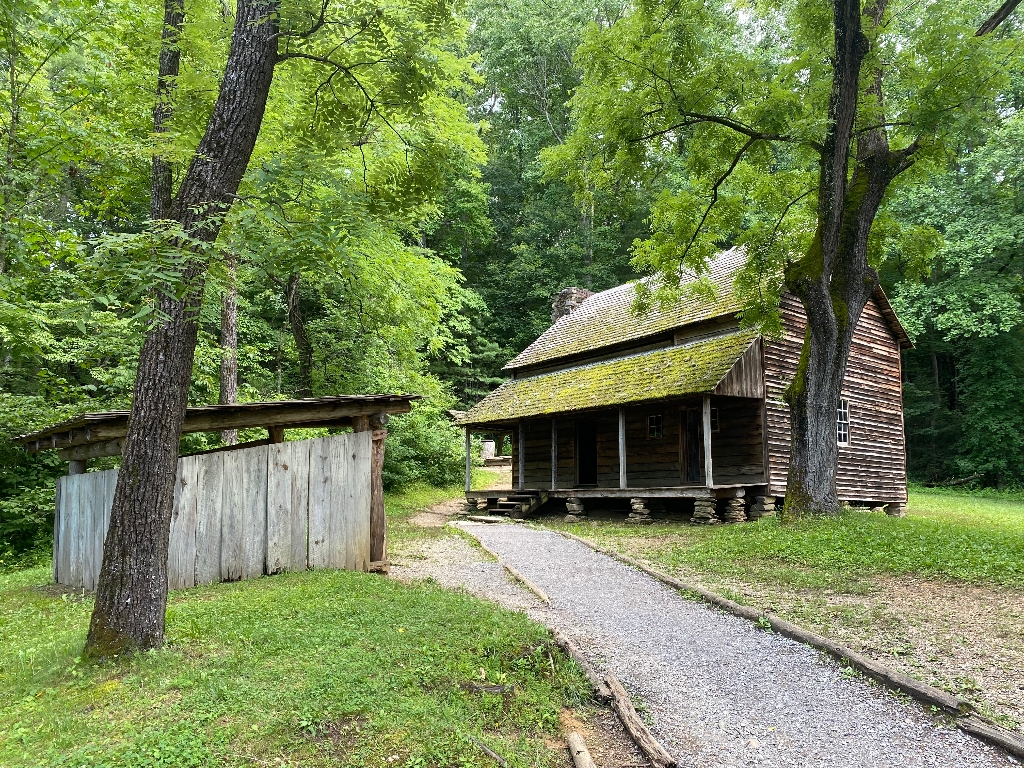
Tipton Place was part of a 640-acre land parcel obtained by William “Fighting Billy” Tipton under the Tennessee Land Grant in the 1820s. William’s land eventually covered most of the valley floor through other grants, and while he never lived in Cades Cove, he is the first recorded legal landowner. William sold his land to friends and relatives including Colonel Hamp Tipton, his grandson, who built the two-story cabin in the 1870s. Hamp Tipton’s daughters, Lucy and Lizzie, lived in the cove into adulthood and were schoolteachers. In 1878, the home was rented to James McCaulley as he built his own homestead that included blacksmith and carpentry shops. In 1895, Hamp Tipton passed away and his estate was sold to Reverend William H. Oliver, whose family lived there until the land was purchased for the park in 1931. The site is sometimes referred to as the Tipton-Oliver homestead in reference to both families that lived there.
The homestead of Hamp Tipton included the two-story cabin he built, barn, double-pen corn crib, blacksmith shop, smokehouse, woodshed, springhouse, apple drying house, and bee apiary. Apiaries were sometimes referred to as bee gums, as early beehives were kept in hollowed out Blackgum trees (Nyssa sylvatica). The homestead now sits on 2.2 acres. The framed buildings including the springhouse and apple drying house, as well as framed additions to the cabin and a post-1900 barn, were all removed to maintain a sense of historical continuity and preserve a specific era of life in the cove.
The lefthand door on the front of the house leads into the living room with three paned windows and a fireplace. To the left of the fireplace are stairs to the sleeping loft on the second floor. The righthand door leads into the main bedroom, which has two, small paned windows. The back room of the house was once the kitchen. This room has two windows and two doors; one door leads to a small porch and the other leads to the back of the property. The kitchen has two holes close together on one of the walls where a telephone was attached. This connected to the blacksmith shop on the homestead as well as a store which was located across the road.
One of the most unique parts of the Tipton Place is the cantilever barn which was reconstructed in 1968. Cantilever barns have overhangs, or cantilevers, used to store hay for easy access, with spaces for livestock pens, grain cribs, and equipment storage underneath. This allowed farmers to maximize the amount of storage possible for their livelihoods, while keeping livestock and equipment dry from the rainy eastern Tennessee weather. Cantilever barns can be found across the southeastern United States, but Sevier and Blount counties in Tennessee have the highest number of cantilever barns in the world.
Is there something we missed for this itinerary?
Itineraries across USA


















































